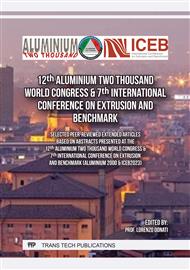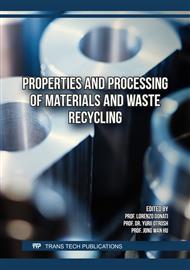p.3
p.11
p.21
p.31
p.47
p.65
p.73
p.81
Simulation of Quench Rate by Jominy End Quench Test for 6082 Aluminium Alloys
Abstract:
In the present study, it is aimed to investigate the influence of quench rate on the hardness and electrical conductivity that obtained after artificial aging by using Jominy End Quench test method. The Jominy End Quench test bars were solution heat treated at 560°C for 3 hours. After solution heat treatment, water, spray, and air quenching medias were used in order to obtain different quench rates. After the quench, quench rate determination, hardness and electrical conductivity measurements were performed for three different quenching medias. Then, artificial aging heat treatment were applied to all samples at 180°C for 8 hours to understand the effect of quench rate on aging process. The relationship between quench rate, hardness and electrical conductivity have presented.
Info:
Periodical:
Pages:
11-20
Citation:
Online since:
September 2024
Authors:
Keywords:
Permissions:
Share:
Citation:



